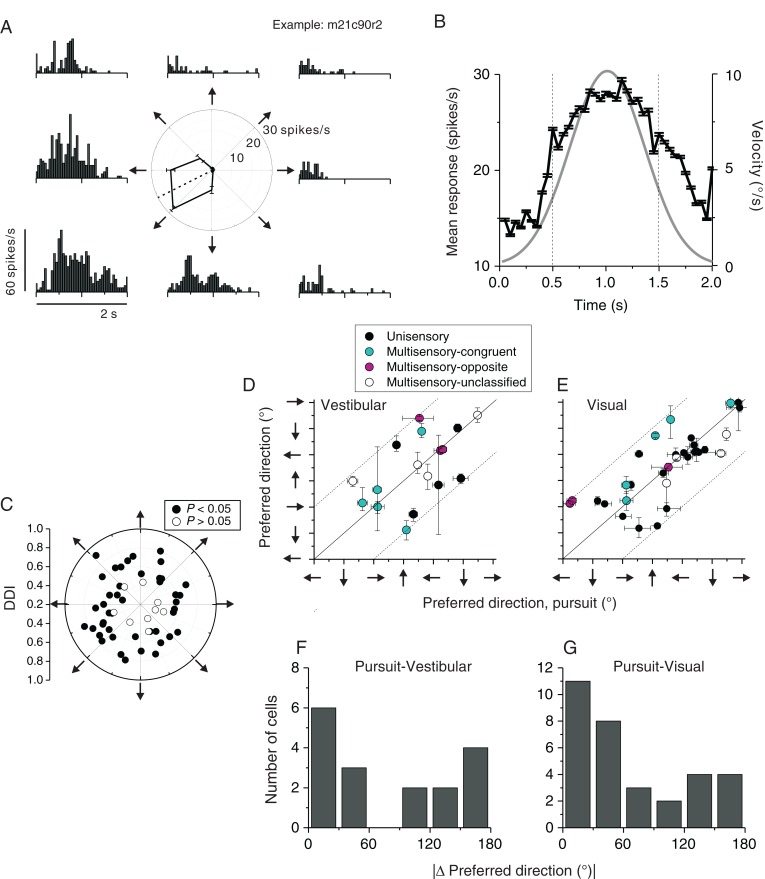Figure 10.
Pursuit response properties. (A) An example FEFsem neuron's activity during smooth pursuit of a target moving along 8 directions in the frontoparallel plane (indicated by arrows around the polar plot). The tuning curve in the polar plot was based on average firing rate during the middle 1 s of stimulus duration (vertical dashed lines in B). (B) Population PSTH from 54 neurons tested during pursuit. Responses were pooled from the maximum pursuit direction in the vertical plane for each neuron, regardless whether the neuron's modulation to pursuit was significant or not (P < 0.05, 1-way ANOVA, see below). Target speed followed a Gaussian velocity profile (gray line). (C) Joint distribution of preferred pursuit direction and response strength assessed by DDI. Filled symbols represent neurons with significant pursuit tuning (N = 45, P < 0.05) while open symbols represent insignificant tuning (N = 9, P > 0.05). (D and E) Comparison of the preferred pursuit direction and preferred vestibular heading (D) or the preferred visual heading (E). Error bars represent 95% confidence intervals. Filled black symbols: unisensory cells responding only to vestibular (D) or visual (E) heading stimuli; filled cyan symbols: congruent multisensory neurons (|Δ preferred heading, vestibular-visual| <60°); filled magenta symbols: opposite multisensory neurons (|Δpreferred heading, vestibular-visual| >120°); open symbols: unclassified multisensory neurons (|Δpreferred heading, vestibular-visual|>60° and |Δ preferred heading, vestibular-visual|<120°). Arrows next to the axes represent pursuit direction, vestibular heading direction, or the simulated heading in the visual condition. For example, a rightward arrow designates pursuit to the right, or heading to the right. (F and G) Distribution of difference in preferred direction, |Δ preferred direction|, between pursuit and vestibular heading (F, n = 17) or visual heading (G, n = 32) conditions.

